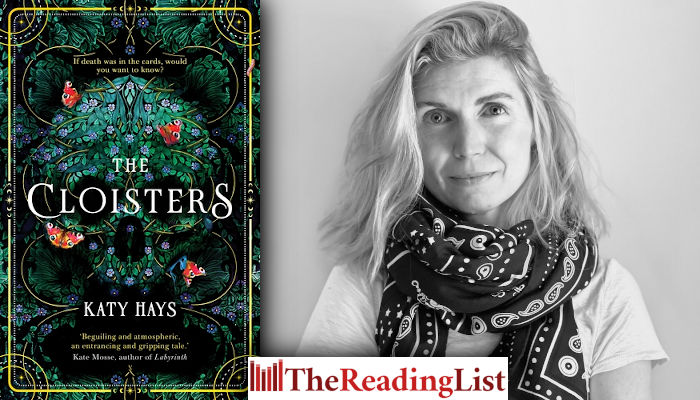A tale of obsession and magic – Author Katy Hays chats about her sinister, atmospheric debut novel The Cloisters
More about the book!

The Cloisters is a sinister, atmospheric novel about the discovery of a mysterious deck of tarot cards. Author Katy Hays speaks about the setting of the story, fortune and the idea behind her riveting debut.
‘Do I think it’s possible that some things are meant to find us? Absolutely.’
A friend recently said to me ‘it’s better to be lucky than good’. And while I do believe that we are – for the most part – authors of our own fate, I think it would be unwise to understate the importance of fate or luck or fortune or whatever you might want to call it. Of course, we have free-will; we make choices every day. Choice is the backbone of our life. But do I think it’s possible that some things are meant to find us? Absolutely.
My novel, The Cloisters, revolves around the discovery of a mysterious deck of tarot cards that lay bare shocking secrets within a close-knit circle of researchers at New York’s famed Met Cloisters museum. Unsurprisingly, the setting and the story came together at the same time; they are inextricable in my opinion. I always knew that the novel would have a 15th-century deck of tarot cards at its centre and The Cloisters has always had medieval cards – both tarot and playing cards – in their collection. The gothic atmosphere and gorgeous gardens made the museum an immediate, natural match for the story I wanted to tell.
As a writer, I’m always interested in the question: what are we capable of believing? Whether it’s tarot or a charismatic leader or a new age belief system or even a ghost story, I’m fascinated by what we can convince ourselves of; by the way rational, normal people who so easily find themselves believing the unbelievable.
One of the most fascinating things I discovered during my research for The Cloisters was in a wonderful book by Mary Quinlan-McGrath, Influences: Art, Optics, and Astrology in the Italian Renaissance. In it, Quinlan-McGrath argues that anyone with a bit of power during the Renaissance (Popes, aristocrats, philosophers, etc) believed that painted representations of celestial bodies could impact someone’s horoscope. I remember reading her book and thinking: this is absolutely the weirdest thing I have ever read! For example, if Mercury is in Scorpio and I’m standing under a constellation of Taurus, just standing under the painting will make my communication sluggish? What?
I think atmosphere and environment are essential to how we respond to stimuli! If you hear a ghost story during the day, it’s easy to laugh it off, rationalise it. But when someone is telling that same story around a campfire on a dark, windy night … well, that’s a different matter entirely. So the building and world of The Cloisters dramatically influences the characters in the novel. It’s an atmosphere that makes it possible to believe the unbelievable.
I think tarot and divination occupy an interesting position because they have both been part of our collective consciousness for centuries. What better way to explore the question of what the people working at The Cloisters might be able to believe than looking at some of the earliest forms of divination and their contemporary aftershocks?
The Cloisters is out now.
~~~
This article was originally published in The Penguin Post, a magazine from Penguin Random House South Africa.
Categories Fiction International
Tags Katy Hays Penguin Random House SA The Cloisters The Penguin Post
